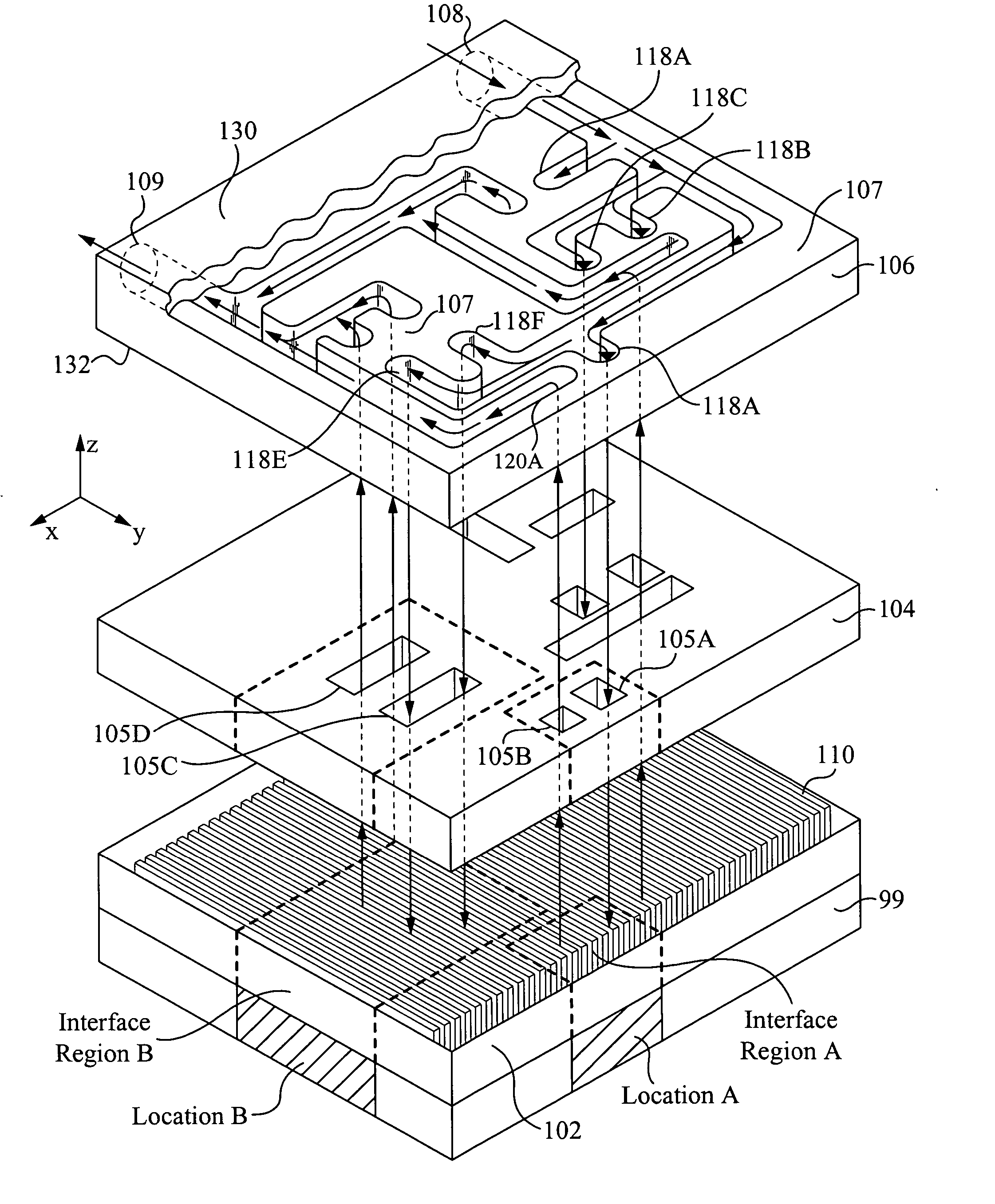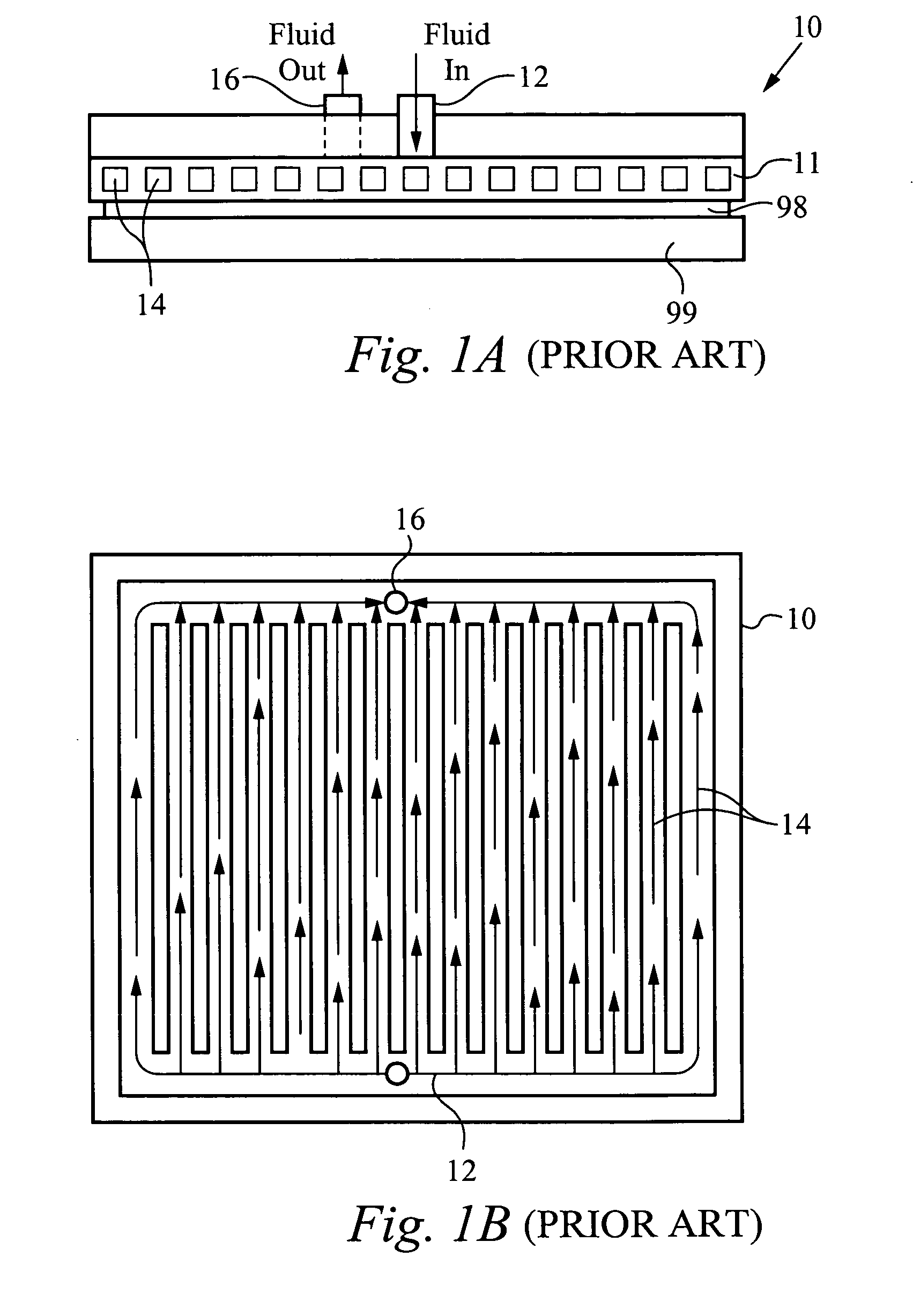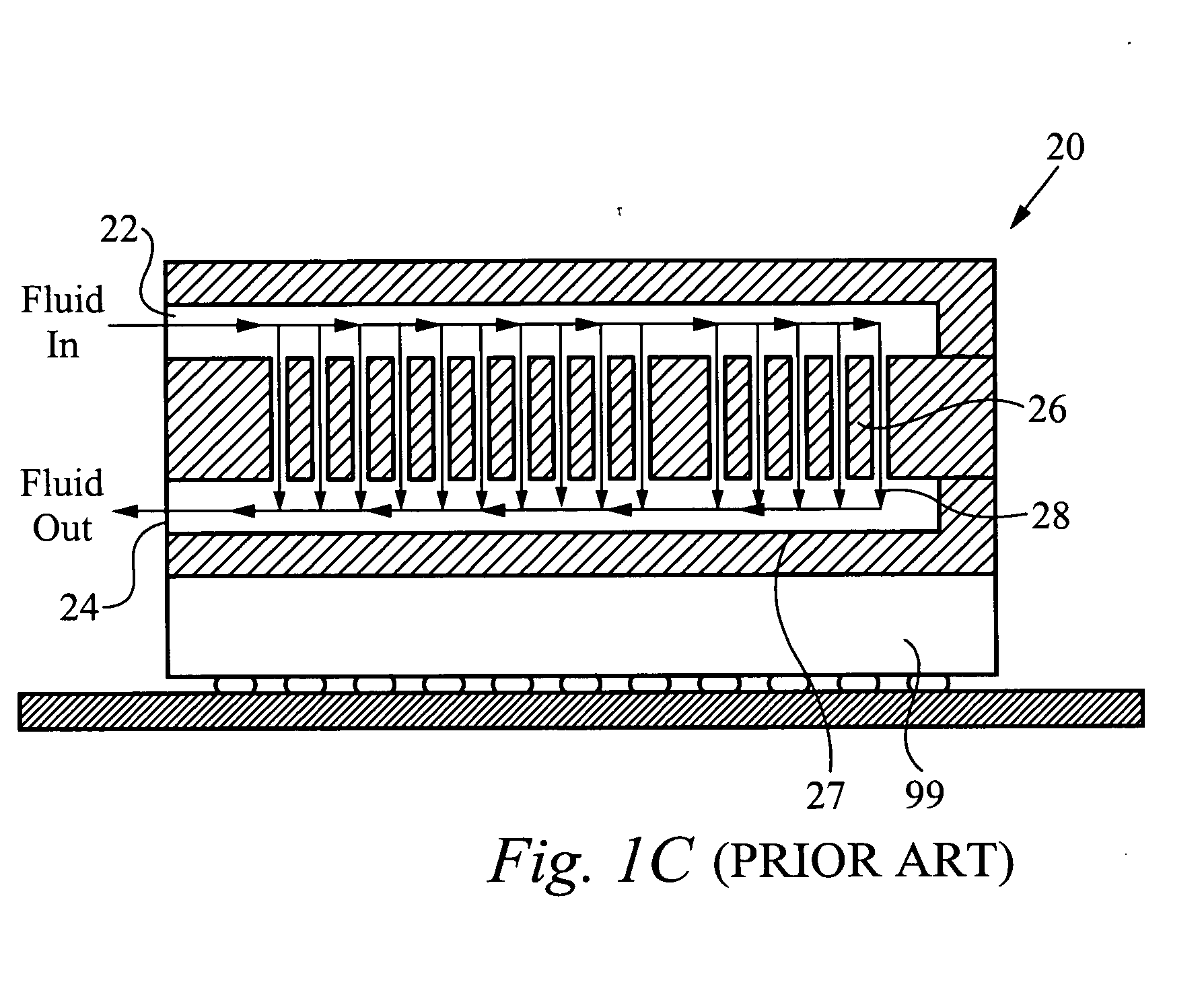Method and apparatus for flexible fluid delivery for cooling desired hot spots in a heat producing device
- Summary
- Abstract
- Description
- Claims
- Application Information
AI Technical Summary
Benefits of technology
Problems solved by technology
Method used
Image
Examples
Embodiment Construction
[0034] Generally, the heat exchanger captures thermal energy generated from a heat source by passing fluid through selective areas of the interface layer which is preferably coupled to the heat source. In particular, the fluid is directed to specific areas in the interface layer to cool the hot spots and areas around the hot spots to generally create temperature uniformity across the heat source while maintaining a small pressure drop within the heat exchanger. As discussed in the different embodiments below, the heat exchanger utilizes a plurality of apertures, channels and / or fingers in the manifold layer as well as conduits in the intermediate layer to direct and circulate fluid to and from selected hot spot areas in the interface layer. Alternatively, the heat exchanger includes several ports which are specifically disposed in predetermined locations to directly deliver fluid to and remove fluid from the hot spots to effectively cool the heat source.
[0035] It is apparent to one...
PUM
 Login to View More
Login to View More Abstract
Description
Claims
Application Information
 Login to View More
Login to View More - R&D
- Intellectual Property
- Life Sciences
- Materials
- Tech Scout
- Unparalleled Data Quality
- Higher Quality Content
- 60% Fewer Hallucinations
Browse by: Latest US Patents, China's latest patents, Technical Efficacy Thesaurus, Application Domain, Technology Topic, Popular Technical Reports.
© 2025 PatSnap. All rights reserved.Legal|Privacy policy|Modern Slavery Act Transparency Statement|Sitemap|About US| Contact US: help@patsnap.com



